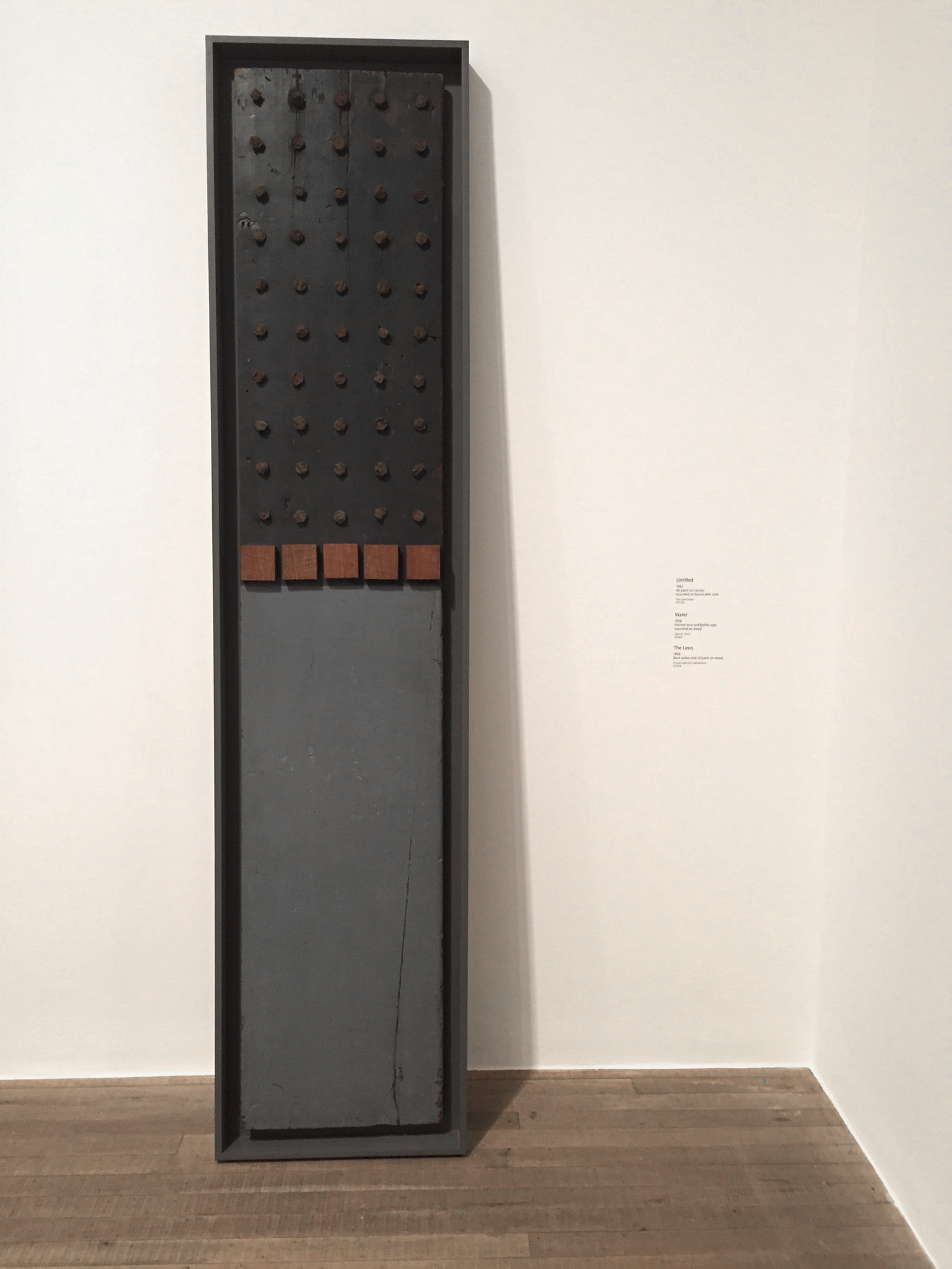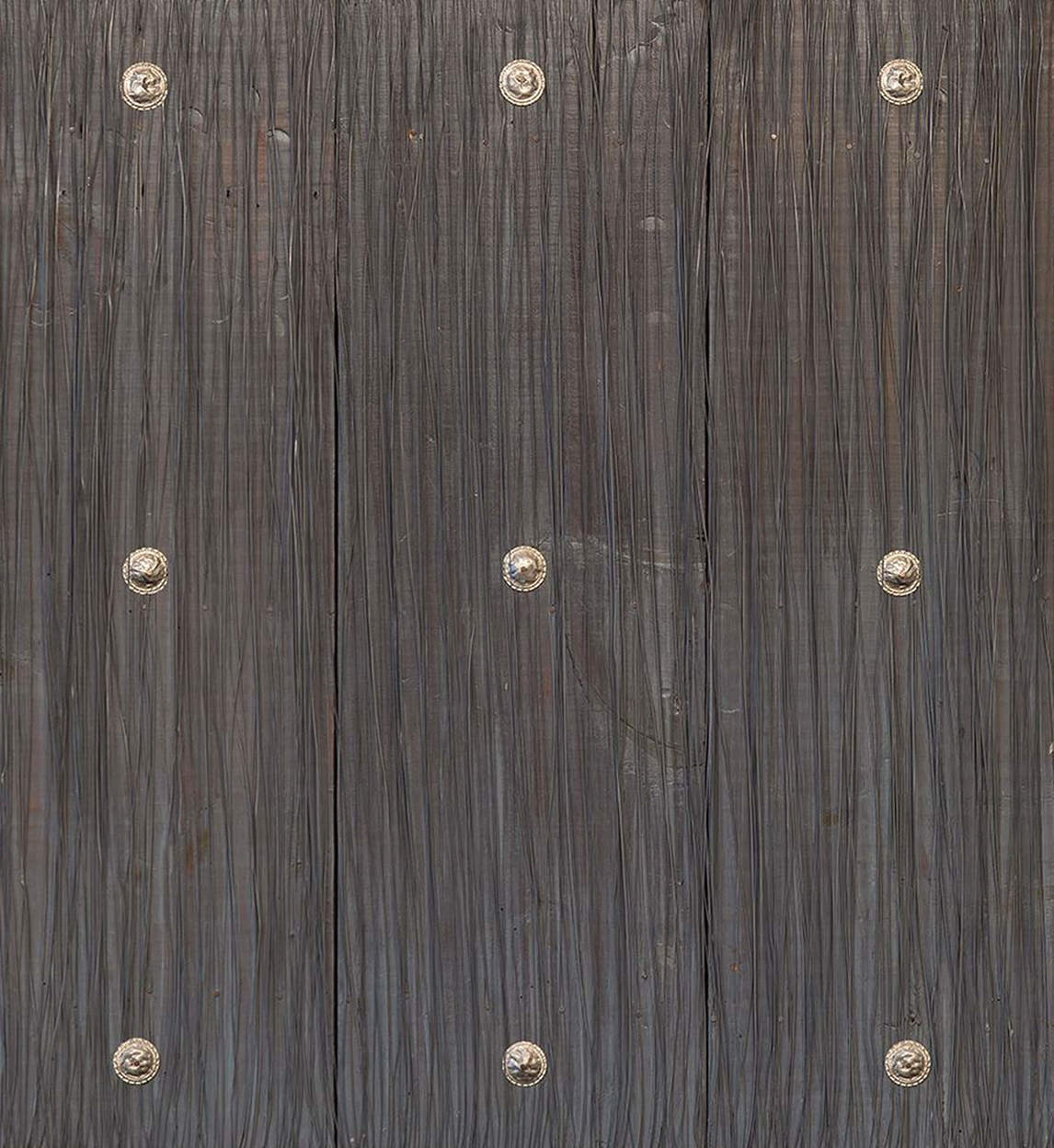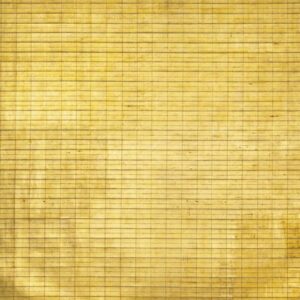The Laws 1958

Agnes Martin, The Laws, 1958
Oil and boat spikes on wood, 263.9 x 45.7 x 5.1 cm
Private collection, Switzerland
© Agnes Martin / SOCAN (2019)
Agnes Martin established her career while living in New York City between 1957 and 1967, having previously lived there on two occasions as a student. During the first years of this sojourn in the city, she produced a handful of assemblages, including The Laws. The artwork consists of a wooden board, which is over two metres tall, painted dark blue on the top half and a lighter blue on the bottom half. A grid of fifty boat spikes is nailed into the top half of the board—one of Martin’s first ever nods to the grid format. A grid of similar style appears in many compositions over the following four years, including as bottle caps in Water, 1958, and steel nails in The Wall #2, 1962.

Martin lived in several lofts on Coenties Slip, near the East River in what must have felt like a forgotten corner of Manhattan. The Slip was a disappearing part of the New York of Herman Melville, who set his 1851 novel Moby-Dick on the whaling ships that came and went from Manhattan’s seaport. The lofts and docks around Coenties Slip offered the artists who lived there a ready supply of detritus and abandoned objects from which they could fashion artworks. This is seen in the work of Robert Indiana (1918–2018), who, like Martin, lived on the Slip, and Robert Rauschenberg (1925–2008), who had a place around the corner on Pearl Street. Indiana and Rauschenberg were both associated with the Pop art movement and, like Martin, used found objects from the waterfront to create three-dimensional sculptures and assemblages.
The pioneering fibre artist, Lenore Tawney (1907–2007), who also lived on Coenties Slip, acquired The Laws. Tawney, who would become a long-time friend of Martin, owned other three-dimensional artworks by the artist, including Kali, 1958, and Homage to Greece, 1959. Martin’s assemblages are largely concentrated in private collections and rarely exhibited or reproduced, although The Laws may have been included in Martin’s second exhibition at Betty Parsons Gallery in December 1959. Martin abandoned the style by 1963, just as she was settling on the grid paintings that would make her famous. Artworks such as The Laws and The Wall #2 represent not only key moments in the development of her grid but also proof of a deep engagement with the vibrant avant-garde scenes of 1960s New York.

 About the Author
About the Author
 More Online Art Books
More Online Art Books
 Acknowledgements
Acknowledgements